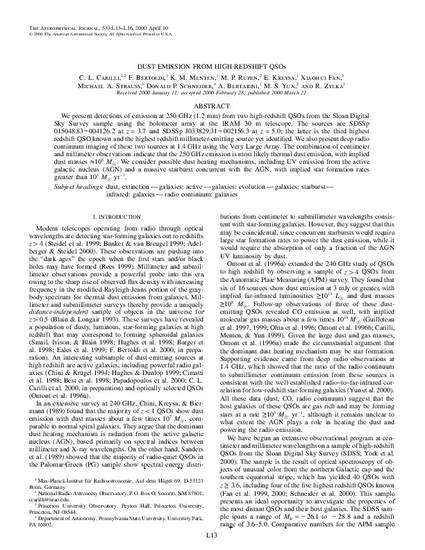
Article
Dust Emissions from High-Redshift QSOs
Astrophysical Journal Letters
(2000)
Abstract
We present detections of emission at 250 GHz (1.2 mm) from two high-redshift QSOs from the Sloan Digital Sky Survey sample using the bolometer array at the IRAM 30 m telescope. The sources are SDSSp 015048.831004126.2 at z = 3.7 and SDSSp J033829.311002156.3 at z = 5.0; the latter is the third highest redshift QSO known and the highest redshift millimeter-emitting source yet identified. We also present deep radio continuum imaging of these two sources at 1.4 GHz using the Very Large Array. The combination of centimeter and millimeter observations indicate that the 250 GHz emission is most likely thermal dust emission, with implied dust masses ¼108 M,. We consider possible dust heating mechanisms, including UV emission from the active galactic nucleus (AGN) and a massive starburst concurrent with the AGN, with implied star formation rates greater than 103 M, yr21.
Keywords
- dust,
- extinction,
- galaxies: active,
- galaxies: evolution; galaxies: starburst,
- infrared: galaxies,
- radio continuum: galaxies
Disciplines
Publication Date
April 10, 2000
Publisher Statement
doi:10.1086/312588
Citation Information
C L Carilli, K M Bertoldi, K M Menten, M P Rupen, et al.. "Dust Emissions from High-Redshift QSOs" Astrophysical Journal Letters Vol. 533 Iss. 1 (2000) Available at: http://works.bepress.com/min_yun/75/
